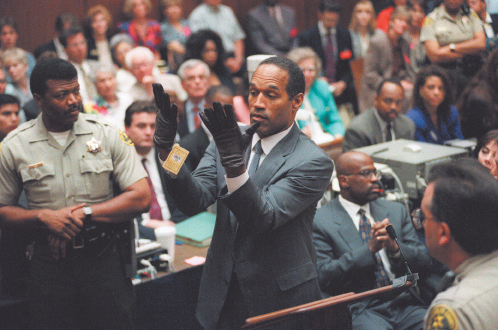First Amendment versus Sixth Amendment
Printed Page 430
First Amendment protections of speech and the press have often clashed with the Sixth Amendment, which guarantees an accused individual in “all criminal prosecutions . . . the right to a speedy and public trial, by an impartial jury.” Gag orders, shield laws, and laws governing use of cameras in a courtroom all put restrictions on speech and other forms of expression for the sake of Sixth Amendment rights.
VideoCentral  bedfordstmartins.com/ mediaessentials
bedfordstmartins.com/ mediaessentials

Bloggers and Legal Rights
Legal and journalism scholars discuss the legal rights and responsibilities of bloggers.
Discussion: What are some of the advantages and disadvantages to the audience turning to blogs, rather than traditional sources, for news?
Gag Orders
In recent criminal cases, some lawyers have used the news media to comment publicly on cases that are pending or in trial. This can make it difficult to assemble an impartial jury, thus threatening individuals’ Sixth Amendment rights. In the 1960s, the Supreme Court introduced safeguards for ensuring fair trials in heavily publicized cases. These included placing speech restrictions, or gag orders, on lawyers and witnesses. In some countries, courts have issued gag orders to prohibit the press from releasing information or giving commentary that might prejudice jury selection or cause an unfair trial. But in the United States, especially since a Supreme Court review in 1976, gag orders have been struck down as a prior-restraint violation of the First Amendment.
Shield Laws
Shield laws state that reporters do not have to reveal their sources of information used in news stories. The news media have argued that protecting sources’ confidentiality maintains reporters’ credibility, protects sources from possible retaliation, and serves the public interest by providing information citizens might not otherwise receive. Thirty-five states and the District of Columbia now have some type of shield law. There is no federal shield law in the United States, though, leaving journalists exposed to subpoenas from federal prosecutors and courts.

Laws Regarding Use of Cameras in Courtrooms
Debates over limiting electronic broadcast equipment and photographers in courtrooms date back to the Bruno Hauptmann trial in the mid-1930s. Hauptmann was convicted and executed for the kidnap-murder of the nineteen-month-old son of Anne and Charles Lindbergh (the aviation hero who made the first solo flight across the Atlantic Ocean in 1927). During the trial, Hauptmann and his attorney complained that the circus atmosphere fueled by the presence of radio and flash cameras prejudiced the jury and turned the public against him. After the trial, the American Bar Association amended its professional ethics code, stating that electronic equipment in the courtroom detracted “from the essential dignity of the proceedings.” For years after the Hauptmann trial, almost every state banned photographic, radio, and TV equipment from courtrooms.
But as broadcast equipment became more portable and less obtrusive, and as television became the major news source for most Americans, courts gradually reevaluated the bans. In the early 1980s, the Supreme Court ruled that the presence of TV equipment did not make fair trials impossible. The Court then left it up to each state to implement its own system. Today, all states allow television coverage of cases, though most also allow presiding judges to place certain restrictions on coverage of courtrooms. The Supreme Court continues to ban TV from its proceedings, although in 2000, it broke its anti-radio rule by permitting delayed broadcasts of the hearings on the Florida vote recount case that determined the winner of the 2000 presidential election.